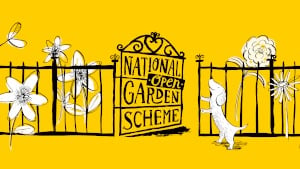About Rustling End Cottage
We came to our tumbledown cottage in 1993 to find a house in need of total repair and a garden overgrown and full of persistent brambles, ground elder and nettles. The cottage was home to shrews, voles and mice and the garden home to muntjac, all manner of rodents and plenty of bird and insect life. To make our home habitable and the garden a garden we had to disturb the resident wildlife which eventually returned. Our garden and cottage are now home to Pipistrelle bats, Purple emperor butterflies, Silver washed fritillary butterflies, Dragon and Damselflies, toads, newts, frogs, warblers, tits, finches, thrushes, owls, swallows & kestrels. There are frequently fallow deer brousing the meadow, hares, stoats and hedgehogs.
To make all this wildlife happy we garden naturally managing the borders extensively instead of intensively and include the use of native flora with the many cultivated plants. All this within a formal structure of hedges which divide the garden into spaces creating different moods as you journey through. There are surprises as you round each corner and the resident wildlife could be spotted at any time.
A floral vegetable garden next to the hens houses a greenhouse with various wildlife relics, Scented pelargoniums, and Tim’s Padron peppers. This is where you will also see various birds nests that we have found in the garden and other wildlife relics. Our meadow which has been managed to increase the flora diversity since our arrival in 1993 is now a an important a LWS Local Wildlife Site due to the diversity of ancient meadow indicator species found, including orchids.
Come to our evening opening for a glass of good wine. The light is often better at this time and the borders look more alive and of course there is often more wildlife to see. Whatever time you choose you will be very welcome. We are very fortunate to live here at Rustling End and really appreciate the diversity of fauna and flora which surround us, and the many birds that visit the pond and feeders and we hope you enjoy your visit here too.
www.rustlingend.com.

.jpg)
.jpg)
.jpg)
.jpg)
.jpg)
.jpg)
.jpg)
.jpg)
.jpg)
.jpg)
.jpg)
.jpg)
.jpg)
.jpg)
.jpg)
.jpg)
.jpg)
.jpg)


.jpg)

.jpg)
.jpg)
.jpg)
.jpg)
.jpg)